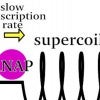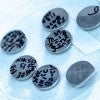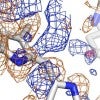
Feds back Rice computer scientist’s security strategy
Ang Chen, an assistant professor of computer science at Rice University, is clearly poised for success. The National Science Foundation agrees.

Feds back Rice computer scientist’s security strategy
Ang Chen, an assistant professor of computer science at Rice University, is clearly poised for success. The National Science Foundation agrees.

Rice students sweep second Datathon
Students from Rice and elsewhere armed with laptops and sleeping bags flooded Duncan Hall on Jan. 24-25 for the second annual Rice Datathon sponsored by the Rice Data Science Club and the Data to Knowledge Lab (D2K).

Rice duo named to National Academy of Engineers
Dean and incoming provost Reginald DesRoches, electrical and computer engineer Gene Frantz earn prestigious honor.

Fed grant backs Rice earthquake research
Rice University Earth scientist Melodie French earns a prestigious National Science Foundation CAREER Award to support her investigation of the tectonic roots of earthquakes and tsunamis.

Housing, ‘pliability’ topics of spring architecture events
Housing and discussions of “pliability” are among the topics of this semester’s Rice Architecture Lecture Series

Cells’ springy coils pump bursts of RNA
Models by Rice chemists calculate the chemical and mechanical energies involved in “bursty” RNA production in cells.

Ordering in? Plants are way ahead of you
Dissolved carbon in soil can quench plants' ability to communicate with soil microbes, allowing plants to fine-tune their relationships with symbionts. Experiments show how synthetic biology tools developed at Rice University can help understand environmental controls on agricultural productivity.

Rice fluids researcher earns solid federal support
Rice University engineer Jesse Chan wins a prestigious National Science Foundation CAREER Award to develop reliable simulations of fluid flow.

Rice lab turns trash into valuable graphene in a flash
Scientists at Rice University are using high-energy pulses of electricity to turn any source of carbon into turbostratic graphene in an instant. The process promises environmental benefits by turning waste into valuable graphene that can then strengthen concrete and other composite materials.

Fear of wildfires inspires forward-thinking communities
A Rice architecture student is thinking hard about the problem humans have with fire and how future dwellers at risk could consolidate resources for their own protection while retaining a sense of community.

CPRIT grant bolsters Rice biosciences
Rice University recruits synthetic biologist Caroline Ajo-Franklin with a $6 million grant from the Cancer Prevention and Research Institute of Texas to bolster the university’s cutting-edge Systems, Synthetic and Physical Biology program.

Less may be more in next-gen batteries
Rice University engineers build full lithium-ion batteries with silicon anodes and an alumina layer to protect cathodes from degrading. By limiting their energy density, the batteries promise excellent stability for transportation and grid storage use.

Not so fast: Some batteries can be pushed too far
Fast charge and discharge of some lithium-ion batteries with intentional defects degrades their performance and endurance, according to Rice University engineers.

Rice, Indian Institute of Technology Kanpur sign memorandum
Rice University and the Indian Institute of Technology Kanpur (IITK) have signed a memorandum of understanding to collaborate on investing resources and research in the development of energy solutions, materials and sustainable technologies.

X-rays show how light transforms photosynthesis ‘switch’
Researchers at Rice and their colleagues get their first detailed look at how plant proteins reconfigure themselves when exposed to light.